- Home
- Home
- Mining and construction simulators
- Training Systems
- Port simulators
- Training Systems
- Industrial simulators
- Training Systems
- Gallery
- Training Systems
- Hardware Components
- Hardware
- Simulator Models
- Hardware
- Why Simulators?
- Hardware
- Technical information
- Software
- Our Solutions
- Software
- Instructor Information
- Software
- Collaborative Mode
- Software
- Services
- Services
- Ship-to-Shore Crane Simulator
- Bulldozer Simulator
- Mobile Harbour Crane Simulator
- Mining Truck Simulator
- Wheel Loader Simulator
- Underground LHD Loader Simulator
- Forklift Simulator
- High Capacity Forklift Simulator
- 360 Excavator Simulator
- Mobile Crane Simulator
- Rail Mounted Gantry Crane Simulator
- Tower Crane Simulator
- Rubber-Tyred Gantry Crane Simulator
- Telehandler Simulator
- Grader Simulator
- Reach-Stacker Simulator
- Backhoe Simulator
- Ro-Ro Simulator
- Straddle Carrier Simulator
- WheelDozer Simulator
- Articulated Mining Truck Simulator
- Electric Shovel Simulator
- Empty Container Handler Simulator
- Drilling Jumbo Simulator
- Bridge Crane Simulator
- Farming Tractor Simulator
- Harvester Simulator
- Ship Pedestal Crane Simulator
- Mobile Elevating Work Platform (MEWP) Simulator
- About us
- About us
- Our Learning Methodology
- About us
- Contact
- Contact
Software
Each piece of equipment developed by LSyM has specific mathematical models that accurately and realistically calculate the behaviour of the machinery and its environment. When it comes to simulation, the main objective is learning, therefore, it is not enough for the visual models to be graphically attractive. It is crucial that behaviour of the machinery, objects and the environment is similar to the real one.
The behaviour of the machines is calculated using NVidia PhysX, a GPU based physics library, that allows the use of convex mesh-based collision objects, making the collision detection very accurate and the implementation of realistic cable models based on pulleys that collide with other objects.
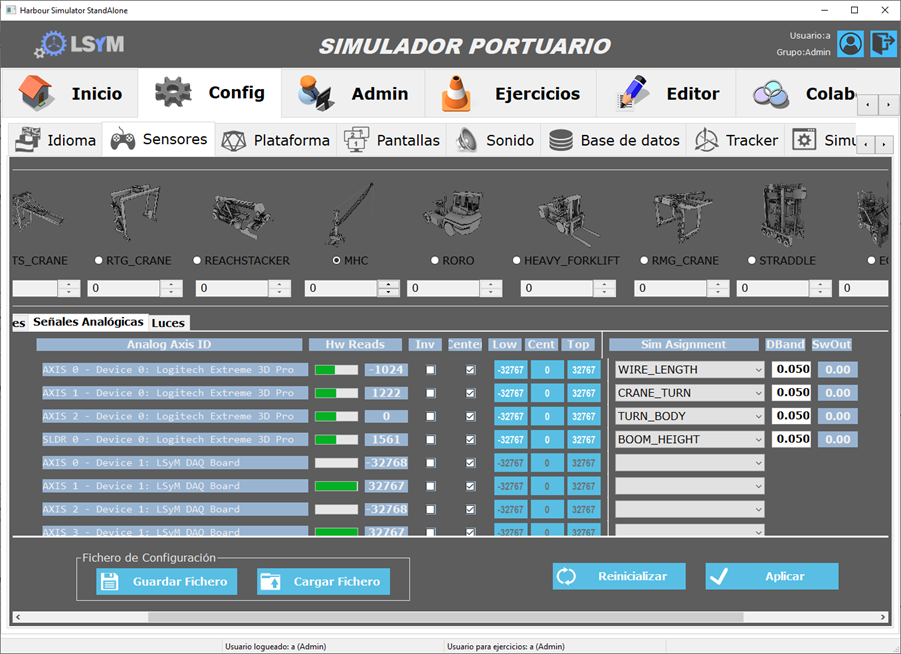
The graphic system generates the visual representation of the scene by means of 3D graphics that is displayed to the user using a high-quality visualization system, which can range from one to five video channels, or even more.
The simulator has a HUD (Heads-Up Display) that shows on the simulation screens and/or additional monitors, all the extra information provided by the real machine to the operator: machine status indicators, position indicator of its implements and various views of the environment.
IF YOU NEED MORE INFORMATION, OUR TEAM IS ALWAYS HAPPY TO ASSIST
OUR SOLUTION
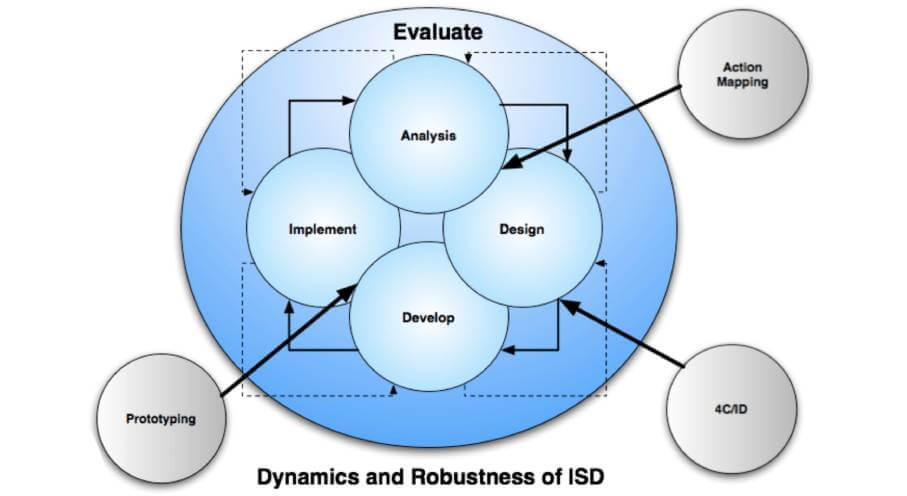
INSTRUCTIONAL SYSTEMS DESIGN (ISD)
As a result of the experience gained over almost three decades, LSyM not only designs a wide range of simulating machines, but also offers a unique Instructional Systems Design.
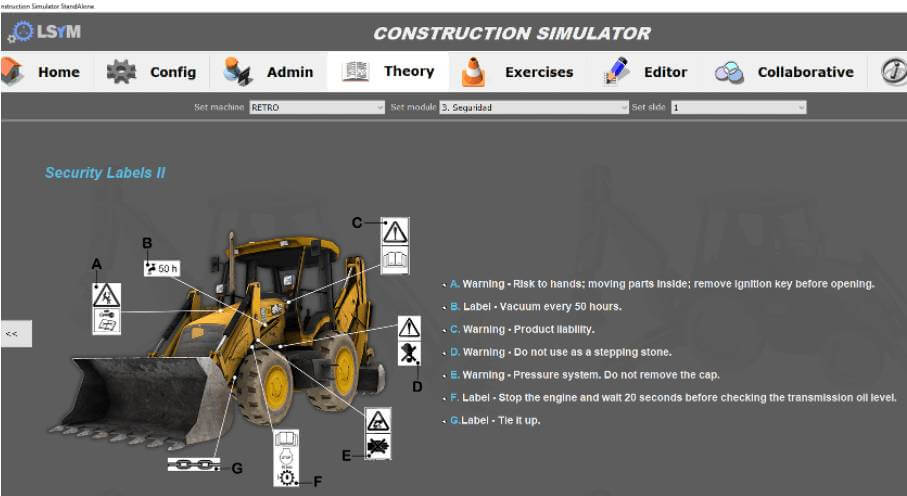
THEORETICAL MODULE
Theoretical Course is a complementary tool which was designed to support instructors during the course. The number and content of these modules vary depending on a machine. Therefore, some machines have a very extensive theoretical information and some does not include this part.
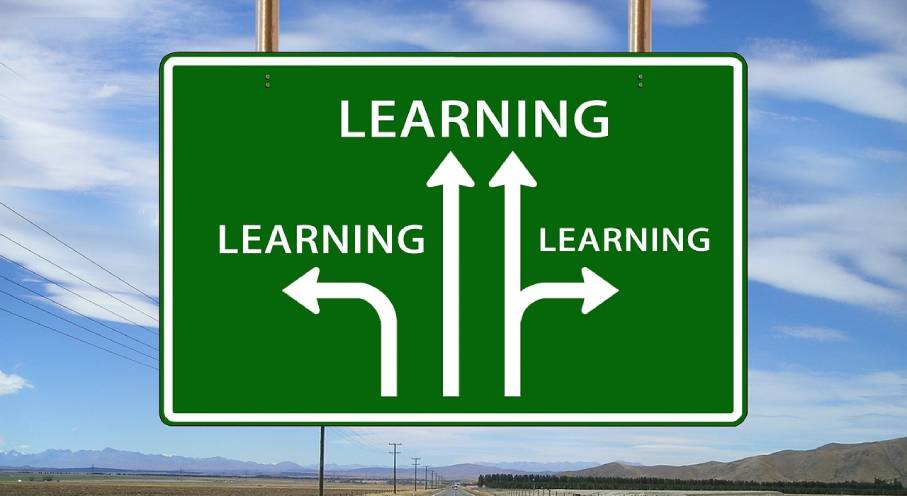
PRACTICAL EXERCIES
A set of didactic materials and tools based on the experience of advanced users and traditional training procedures.
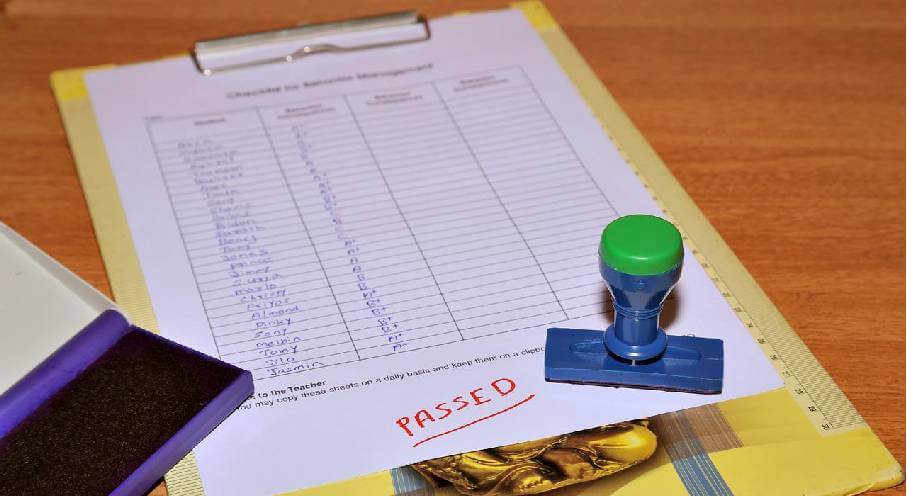
EVALUATION SYSTEM
A set of evaluation tools help the instructor to follow the progress of each of the students with rigor and objectivity.
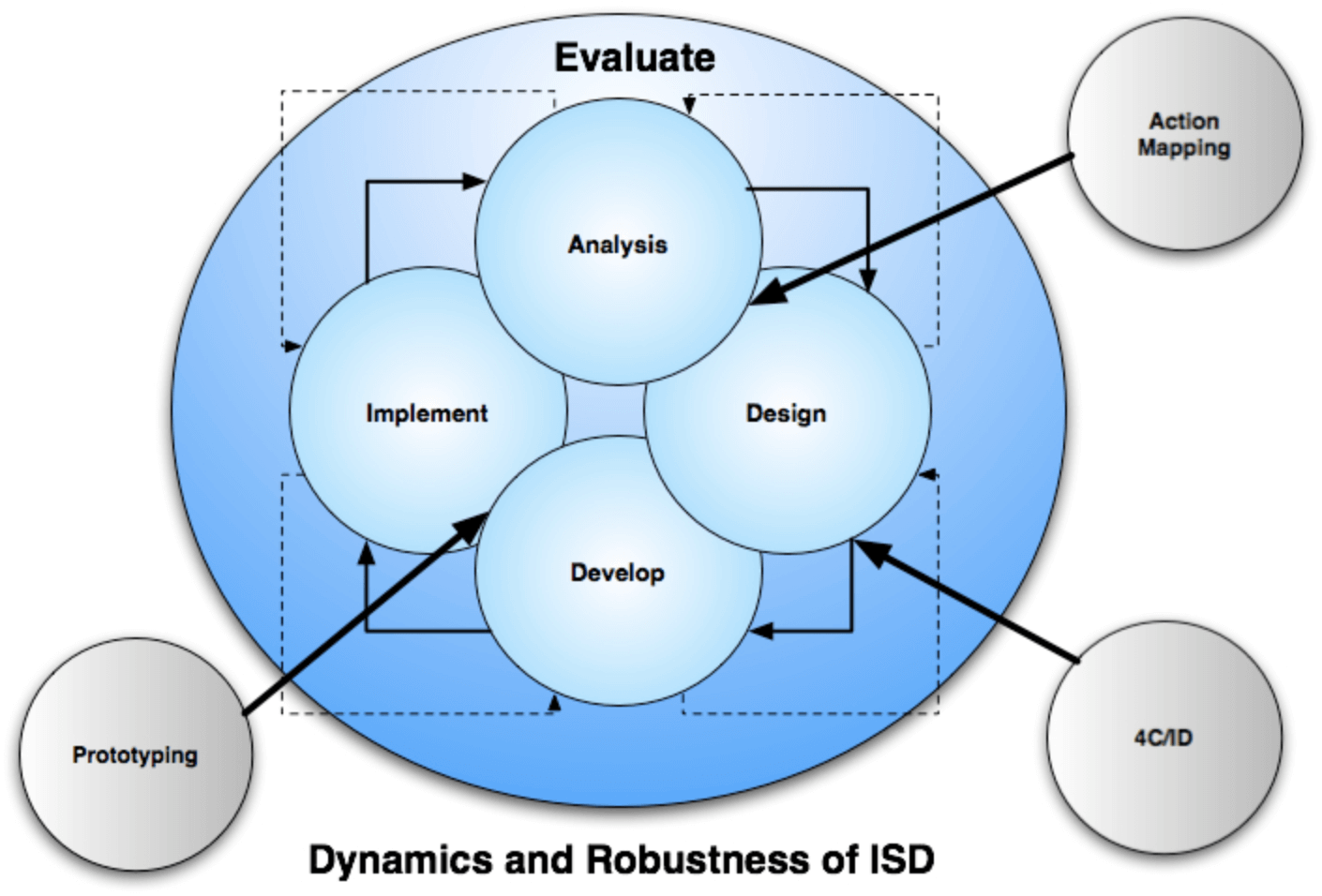
INSTRUCTIONAL SYSTEMS DESIGN (ISD)
As a result of the experience gained over almost three decades, LSyM not only designs a wide range of simulating machines, but also offers a unique Instructional Systems Design.
Instructional Systems Design is a complex System that ensures that all learning material was developed specifically for the education purposes which allows defining the end goals and objectives of instruction, designing and planning assessment tasks, and designing teaching and learning activities to ensure the quality of instruction. This Systems Consists of Theoretical Module (in the majority of the machines), Practical Exercises and Evaluation System.
THEORETICAL MODULE
Theoretical Course is a complementary tool which was designed to support instructors during the course. The number and content of these modules vary depending on a machine. Therefore, some machines have a very extensive theoretical information and some does not include this part. All provided information however, is self-explaining and easy to follow hence can be read by alumni independently.
This module describes topics such as:
- Introduction to the machine.
- Risk prevention.
- Operation security.
- Knowledge of the components.
- Basic maintenance.
- Protocols during the usage.
- Procedures.
- Malfunctioning of the machines.
- Possible problems during the usage.

PRACTICAL EXERCIES
A set of didactic materials and tools based on the experience of advanced users and traditional training procedures.
It sequences the skills to be acquired following a pre-established correct order, which is necessary in achieving the best results. Systematic practices allow users to get the most out of the equipment, acquire necessary skills and minimize the training time. In addition, the instructor has flexibility in modification of courses depending on the learning objectives, as experienced users who want to enhance their practical skills might need a different approach from those learning the skills from the beginning.
Example of Modules and ExercisesRISK MANAGEMENT EXERCISES
The main goal of a training simulator is that users learn how to use different machines without the need of using a real one, avoiding risks. Hence, it is crucial for a simulator to mimic possible situations identical to those, that can occur in a real life.
Our software allows the instructor to modify conditions of the simulation and inject various faults into the machine during the execution of the exercise. The trainee must react appropriately, identifying the cause of the fault and perform an appropriate corrective action. Such exercises are very important in preparation for the unexpected situations in the real life.
REQUEST INFORMATIONCHANGES IN CONDITIONS
TIME OF DAY
Time of the day might affect alumni’s visibility and as result endanger alumni and his/hers surrounding. Illumination can be modified from full light to night time.


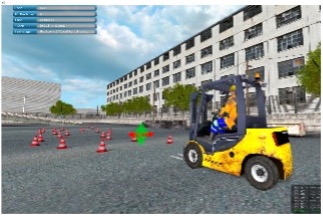

WEATHER CONDITIONS
Weather changes might have a significant effect on machinery operation. In addition to fog, rain and snow, instructor can also modify wind speed and wind direction.



INJECTABLE FAULTS
A part from achieving exercise goal, it is fundamental to monitor the machinery parameters as disregarding those, can lead to unavoidable consequences.
| EVENTS | CONSEQUENCES |
|---|---|
| Reversing beeper failure | Reversing buzzer does not sound |
| Low hydraulic oil level | Engine does not start |
| Low brake oil level | Engine stops |
| Transmission oil pressure too low | Brake release failure |
| Insufficient brake pressure in brake | Blade control does not work |
| Steering does not work | Cannot select gears |
| Pressure accumulator | Partial or total loss of service brakes |
| Engine oil pressure too low | Fire |
| Engine temperature too high | |
| Brake valve failure |
EVALUATION SYSTEM
A set of evaluation tools help the instructor to follow the progress of each of the students with rigor and objectivity. The system automatically generates a series of evaluation reports, which include relevant information on a wide variety of parameters of the exercises performed, as well as simulation data. The reports are generated for each of the exercises performed, as well as for the entire training process. This makes it possible to objectively quantify the level of expertise a user has achieved with the simulator. In this way, the instructor can gain justifiable confidence that a trainee has acquired sufficient skills to be able to use the real machine.

Evaluation and formation program features:
- Guided exercises with visual instructions on screen.
- Course manual with accurate description of the exercises and of the different skills to be acquired through every one.
- Database system to store all the information of each trainee and of advanced users.
- Record system to monitor the evolution of every user along the training program. Individual performance reports and statistical comparison with historical data.
- Exercise and overall reports, summaries, etc. with graphical plots and general information for each trainee.
- Possibility of introducing new parameters and data in the reports upon demand.
- Full control of the different tools from the instructor's console.
- Video recording of an exercise.
- Pause in the simulation that can be invoked from the instructor's console to give indications to the trainee at any moment during the simulation.
Reports at the instructor's console show:
- Date, time and duration information per exercise.
- Overall course information with finished exercises, average performance of the trainee, evolution along time, skills acquired, etc.
- Velocity log, and graphical plots of velocities. Maximum velocities record.
- Collision log, with track of collision velocities and of strong collisions.
- Graphical representation of trajectories of spreader, hook, vehicle, etc.
- Acceleration log, with record of dangerous accelerations, overload of the machinery, etc. and graphical plots.
- Record of dangerous or prohibited manoeuvres during the simulation.
- Statistical analysis of data to better plan future training programs.

These data allow instructor not only to evaluate individual student, but also to use it as a tool for statistical purposes such as analysing the data across different classes in the course of the year(s). This information later can be used by HR in modification of training program.
Risk Management Course
In addition, we have created a short risk management course in which instructors can learn quick and effective methods on developing risk management skills. We guide instructors by giving them the order of the exercises as well as demonstrate best ways of injecting scenarios, which are proofed to be the best way of achieving desired results. Contact us to find out more.

